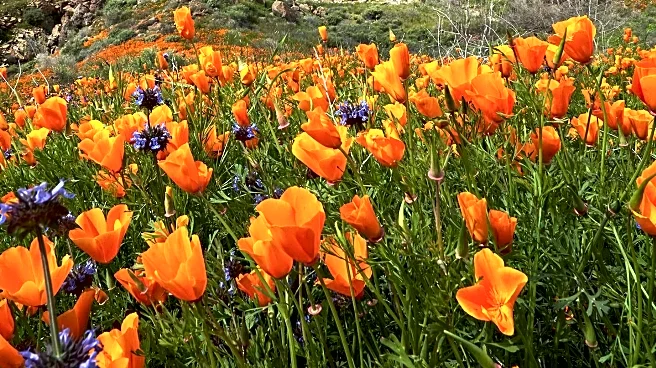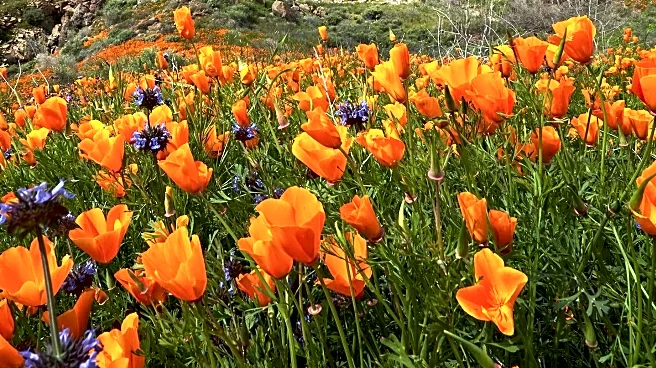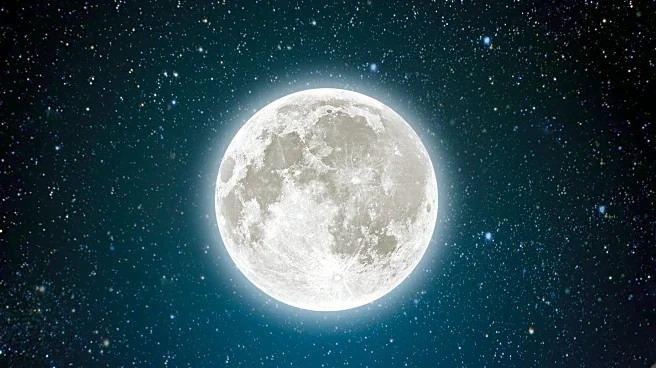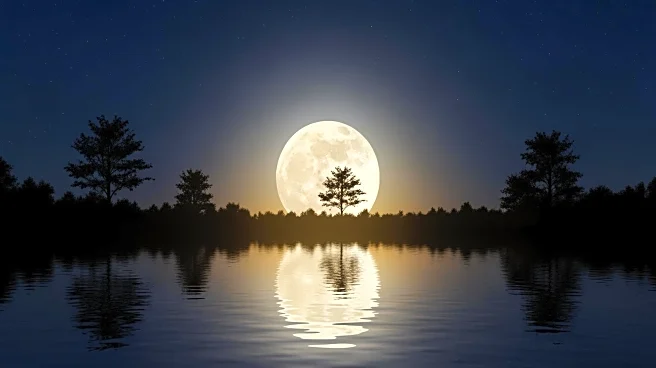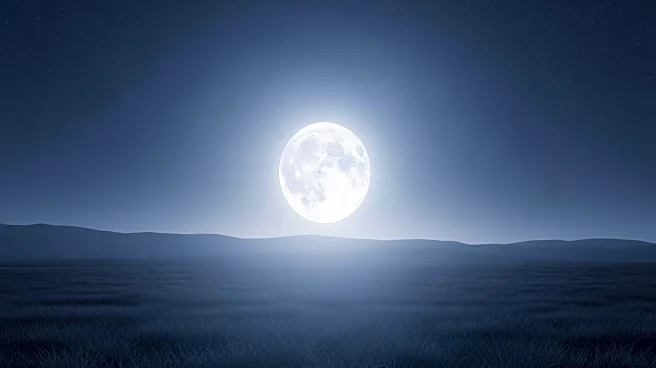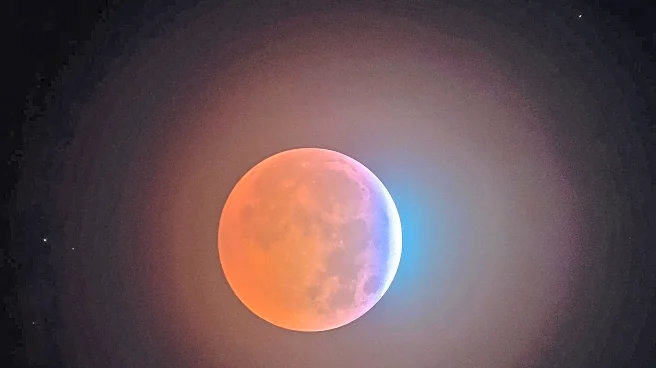What's Happening?
On November 5, 2025, Californians have the opportunity to witness the second of three consecutive supermoons, known as the Beaver moon. This astronomical event occurs when the full moon is at or near its
closest point to Earth, called the perigee, making it appear larger and brighter than usual. The moon reached its peak illumination at 5:19 a.m. PST, but it will continue to appear full for a couple of days. The Beaver moon is named for the time of year when beavers prepare for winter, and it also marks the season of trapping beavers for their pelts during the North American fur trade.
Why It's Important?
The supermoon phenomenon captivates both amateur and professional astronomers, providing a unique opportunity to observe the moon's enhanced size and brightness. This event draws attention to the natural cycles of the moon and its cultural significance, as reflected in the various names given to full moons throughout the year. For the public, it offers a chance to engage with astronomy and appreciate the celestial events that occur regularly. The visibility of the supermoon across California also highlights the state's diverse landscapes, from urban settings to natural vistas, where the moon can be observed.
What's Next?
The next supermoon is expected in December 2025, continuing the series of consecutive supermoons. Stargazers and astronomy enthusiasts will likely prepare for this event, seeking optimal viewing locations and conditions. Educational institutions and observatories may organize events or provide resources to enhance public understanding and appreciation of these celestial occurrences.
